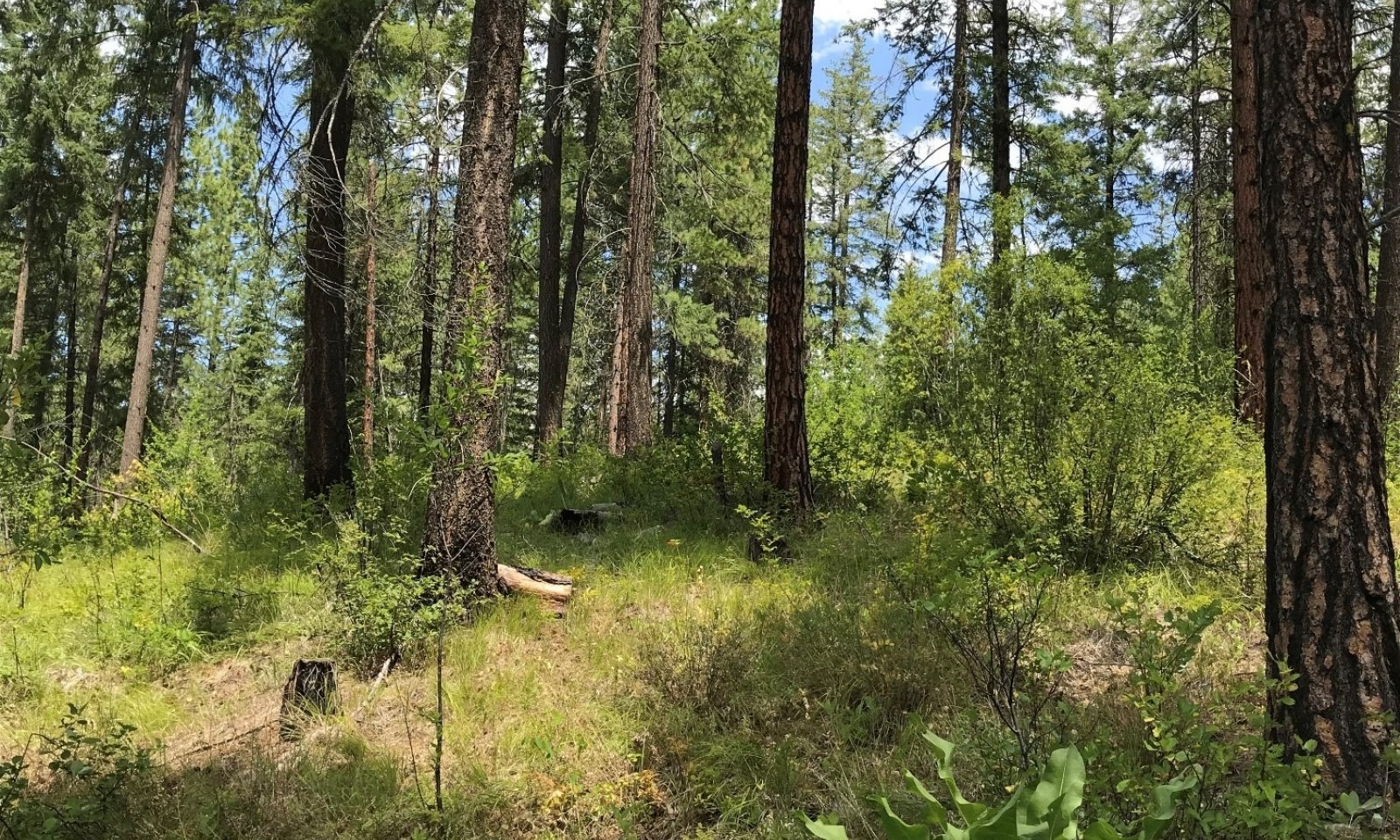
Frigid Xeric Mountain Slopes (Douglas-fir Moderately Dry Shrub/Herb)
Scenario model
Current ecosystem state
Select a state
Management practices/drivers
Select a transition or restoration pathway
-
Transition T1A
Fire exclusion
More details -
Transition T1B
converted to orchards, pasture, or human developments
More details -
Restoration pathway R2A
Selective tree removal and prescribed burning
More details -
Restoration pathway R3A
Conversion back to forest - tree planting
More details -
No transition or restoration pathway between the selected states has been described
Target ecosystem state
Select a state
Description
Moderately open stands of ponderosa pine and Douglas-fir with reoccurring ground fires keeping shrubs and regeneration from increasing into dense stands. This site has good productivity and tree stocking so fires would have to reoccur regularly to keep stand density down. Understory vegetation is dominated by shrubs like snowberry, serviceberry, oceanspray, spiraea, and Scouler willow. Pinegrass and elk sedge were also abundant. Regeneration would include both Douglas-fir and ponderosa pine. As shade increases Douglas-fir regeneration would be more prominent. Fire exclusion has caused much of these sites to have dense stands of Douglas-fir and some ponderosa pine. Ladder fuels and fuel loads increase from understory brush. Stand replacing fires are more common now with ceanothus and other shrub species occupying the sites. Most of this site occurs on lower foothills and human activity has led to land conversion to fruit orchards, pasture, and home developments.
Major insects for Douglas-fir that can cause mortality are the fir engraver, western spruce budworm, and Douglas-fir beetle. The Douglas-fir tussock moth can also cause concern. Drought and dense stands developing from prolonged fire intervals enhance beetle attack and tree mortality. The western pine beetle, mountain pine beetle and pine engraver can cause mortality in ponderosa pine. Dwarf mistletoe can be a found on both Douglas-fir and ponderosa pine. Dwarf mistletoe was found in over 40 percent of the acreages in the Eastern Cascades where Douglas fir was a major stand component. Again, dense stands underneath infected trees from prolonged fire intervals causes mistletoe to spread easier. Fuel loads and ladder fuels increase fire intensity as a result.
Other diseases include annosum, laminated, and armillaria root rots. These root rot diseases are enhanced through soil compaction and root damage though selective logging and road building.
Submodel
Description
Homogenous dense stands of Douglas-fir and ponderosa pine with large understory shrub fuel loads are now typical of this ecological site due to fire exclusion. This leads to more probability of severe stand replacing fires.
Submodel
Mechanism
Fire exclusion causing increased tree density and fuel load buildup in mature stands
Mechanism
Forest converted to orchards, pasture, or human developments.
Mechanism
Selective tree removal and prescribed burning to restore open stand conditions.
Model keys
Briefcase
Add ecological sites and Major Land Resource Areas to your briefcase by clicking on the briefcase (![]() ) icon wherever it occurs. Drag and drop items to reorder. Cookies are used to store briefcase items between browsing sessions. Because of this, the number of items that can be added to your briefcase is limited, and briefcase items added on one device and browser cannot be accessed from another device or browser. Users who do not wish to place cookies on their devices should not use the briefcase tool. Briefcase cookies serve no other purpose than described here and are deleted whenever browsing history is cleared.
) icon wherever it occurs. Drag and drop items to reorder. Cookies are used to store briefcase items between browsing sessions. Because of this, the number of items that can be added to your briefcase is limited, and briefcase items added on one device and browser cannot be accessed from another device or browser. Users who do not wish to place cookies on their devices should not use the briefcase tool. Briefcase cookies serve no other purpose than described here and are deleted whenever browsing history is cleared.
Ecological sites
Major Land Resource Areas
The Ecosystem Dynamics Interpretive Tool is an information system framework developed by the USDA-ARS Jornada Experimental Range, USDA Natural Resources Conservation Service, and New Mexico State University.
